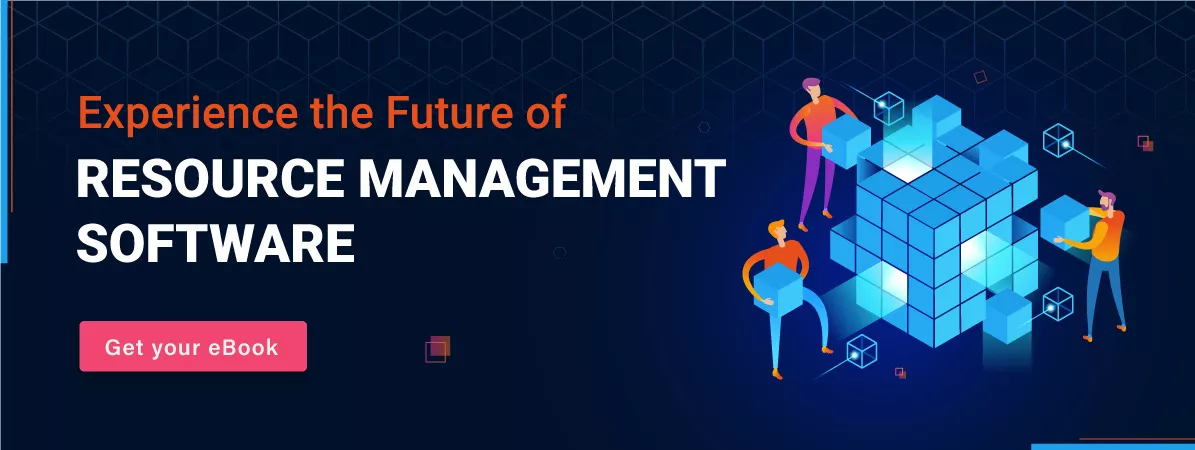The impact of HR on organizational success has evolved from peripheral to pivotal over the years. They bring in a plethora of workforce insights and talent development ideas to the table. They are also responsible for formulating strategies for talent recruitment, onboarding, development, and retention.
How an organization structures, hires, develops, and engages its workforce becomes a key differentiator in top talent retention. That is why HRs are incumbent to stay ahead of the competition.
However, only formulating a hiring or onboarding plan won’t suffice. It should be coupled with a strong talent strategy to get the best personnel onboard.
A robust talent strategy helps attract and hire top talent and enhances organizational performance and profitability by retaining top-performing employees.
This article explains the tips on implementing a top talent strategy that drives your business growth.
But first, let’s find out:
What is talent strategy?
Talent strategy is a plan of action that encompasses recruiting and retaining the right people while filling talent gaps created by the evolving business demands.
A well-designed strategy facilitates the HR function and management to sustain their efficient talent pool. It also enables them to recruit highly skilled employees for specific business goals and maintain a competitive edge.
Now that the definition of a talent strategy is clear let us look at some of its elements,
What are the elements of a talent strategy?
The elements of talent strategy range from the acquisition process to retention and development. They are enlisted below:
- Talent acquisition: Talent acquisition is the process of identifying and acquiring skilled talent for your organizational needs. It includes developing and implementing programs for sourcing and recruiting suitable candidates.
- Employee Value Proposition: Employee Value Proposition (EVP) is a set of rewards and offerings provided by an organization in return for the skills, capabilities, and experiences an employee brings to the organization. It is an employee-centered approach that includes compensations and benefits and helps recruit top performers.
- Employer Branding: Employer branding is the process of managing and influencing an organization’s reputation as an employer among potential job candidates and employees. It contains the actions that place the organization as an employer of choice. Most employees evaluate the firm’s reputation while looking for a job, making good employer branding necessary to attract talent.
- Learning & Development: Learning and development are essential to elevate the employee experience and thus form an integral part of talent strategy. Organizations need to provide suitable training and mentoring programs for an easy onboarding process. This process can be done through job training, job rotations, leadership shadowing, and peer coaching.
- Performance Management: Performance management is the process by which the HR departments measure and reward an employee’s contribution to the business over time. It helps the managers to evaluate an employee’s performance and create a work environment that can bring out the best in employees.
- Talent retention: Talent retention includes the practices and strategies implemented by an organization to retain their top talent. Instances such as employee dissatisfaction, negative experiences, or lack of better alternatives could be why employees leave a company. Employers can include retention strategies like training programs, work benefits, developmental programs, etc.
Let us now look at why implementing a talent strategy is essential.
Why is talent strategy important?
As stated earlier, formulating a talent strategy enables employers to attract, hire, onboard, and retain top talent. Additionally, it helps companies design various plans at every stage of the employee lifecycle to upkeep their morale, thus enhancing their journey throughout the tenure.
Well-established talent strategies employed by companies keep the employees motivated and engaged.
The talent strategy also encapsulates conducting suitable training or upskilling programs, reflecting in their performance and ensuring retention. Moreover, by defining a talent strategy, managers also help employees meet the organizational objectives and standards by encouraging and supporting them to deliver better results. Thus, it improves business performance and client satisfaction.
Mckinsey Global Survey points out the significant relationship between talent management and organizational performance.
Now that the importance of talent strategy is evident, we will look at the ways to create and implement a top talent strategy.
Read More: What are the benefits of talent management?
Effective ways to create & implement top talent strategy in your organization
Formulating a talent strategy demands due diligence and collective efforts from HR, people, and resource managers to offer an outstanding employee experience. Even though it is unique to every organization’s needs, some standard must-haves exist. Below are some of these ways to create and implement a successful talent strategy.
Align hiring with business strategy
The first step of forming the talent strategy is to streamline the hiring plan. Managers must ascertain that this plan aligns with the organization’s strategic objectives. Often business strategies are revamped based on the current global trends. Therefore, employers and HRs should research the specific expertise and capabilities that the workforce needs to meet the current requirements. So, companies must ensure that it has the right talent to achieve goals. For example, resource managers can coordinate with the HR managers after analyzing the skill shortages needed to fulfill pipeline project demands. Accordingly, HR can initiate the hiring process for specific skill sets to meet long-term business goals.
If employees lack the skills and expertise required to take up future projects, the organization will lose potential market opportunities affecting business profitability. Therefore, it is necessary to have early discussions with HR while formulating the business strategy. If there is a planned change in the organization’s business strategy, the HR department can hire and train employees well in advance to meet the new requirements. They can also look into the internal data and understand whether their current employees will handle the change.
Formulate a career pathway with multi-skill building
Once suitable candidates are hired, employers need to formulate a proper career pathway. One of the primary reasons for high attrition and low employee retention rates is the lack of suitable career development opportunities.
According to Gartner,
“Lack of career development opportunities leads to 40% attrition in organizations worldwide.”
The traditional hierarchical career path no longer engages or retains your employees. Instead, organizations can allow lateral movements across various internal functions. This will help employees take on new responsibilities and roles and give them an excellent opportunity to develop and diversify their skills at work, thereby enhancing their performance and productivity. Moreover, the cross-skill building opportunities improve interdepartmental collaboration. In addition, when employees develop strong skill sets, managers can provide them autonomy over their work, thus, increasing task ownership and accountability.
Facilitate positive employee experience
Employee experience includes every interaction that happens in an employee’s life cycle. Therefore, the onus lies on the organization to provide a positive employee experience as it plays a significant role in enhancing performance and professional growth. Companies can implement various practices that align with the organizations’ purpose and culture.
First and foremost, forming an immersive onboarding process kickstart the employee’s journey at the firm. Next, providing individual development programs (IDPs), upskilling opportunities, and performance reviews are necessary for a positive employee experience. Finally, employee value propositions (EVP) and other benefits based on their performance will also contribute to workforce EX. Besides, providing proper amenities to the workforce should also be a part of the EX strategy.
Read More: How Can Your Work Culture Improve the Employee Experience?
Implement robust succession planning
When a critical employee leaves, it creates a gap in the organization that needs to be fulfilled urgently to prevent hindrances. For that, the management must make robust succession planning an integral part of their talent strategy. Otherwise, managers may have to indulge in last-minute firefighting to hire experienced, skilled resources to fill the position. According to Deloitte,
“86% of leaders believe leadership succession planning is an “urgent” or “important” priority.”
Proper succession planning will help create a skilled workforce as the company develops. It will also help manage skill shortages because more resources are ready to take on new responsibilities. Training and upskilling are the best strategies of succession planning to help current employees take up new responsibilities and prepare them for more endeavors.
Promote a conducive environment in the workplace
A conducive work environment is crucial for employees to work efficiently and comfortably. If ignored or not maintained, it will affect productivity and lead to high absenteeism and turnover rates. Therefore, it’s imperative that organizations provide a tech-centered workspace to avoid productivity challenges. Advanced software and tools will enable them to collaborate better, automate mundane tasks, and more, thus enhancing work efficiency.
In addition, employers need to create a work environment where the workforce has comfortable workspaces, ergonomics, optimum lighting, proper ventilation, etc. They can also implement appropriate sanitary measures like air purifiers, ultraviolet disinfectant systems, and regular aircon servicing to prevent any diseases from spreading. Last, managers can have an open-door policy to exhibit support and let employees feel comfortable seeking support and assistance when needed.
Foster trust-building and cross-functional collaboration
Another critical aspect that must be included in a talent strategy is trust-building and cross-functional collaboration. A cross-functional collaboration enables employees from various departments to come together and work for a common goal. This helps the company save costs, access diverse skills, and promote knowledge sharing. For this, trust between departments is necessary. Without trust-building methods, conflicts and discrepancies can arise and build tension.
Transparent communication and a clear explanation of expectations are crucial for fostering trust among the team members. Managers must always be unbiased and be inclusive while making important decisions. Leaders must also provide autonomy and enable employees to give opinions and feedback on the project.
Read More: How to Foster Trust and Transparency in Remote teams
Track and manage employee performance
Performance improvement forms the crux of building a talent strategy. Thus, tracking and managing employee performance will help understand employee efficiency and overall quality of work. First, managers need to provide specific goals based on their skills. Managers also need to define the KPIs and KRAs to have a clear vision of what they are expected to do. For example, resource management software helps managers track resource utilization rates on various activities. It also helps compare the actual time spent on a specific task against the estimated. Next, by assessing the employees’ progress, managers will understand the potential of their workforce. Finally, they can conduct reviews and feedback sessions to help the employees improve their performance.
Managers can also offer new opportunities to help employees go beyond their general roles and responsibilities, diversify their portfolio and reach their potential. For example, appropriate training and upskilling opportunities can help employees do better if the performance does not meet the expectations. Thus, managers can align employee performance with the company’s mission and create a work environment that produces the best quality work.
Formulate reward and recognition program for the top talent
Employee recognition programs help managers recognize, acknowledge, and reward their hardworking top talent. When employees’ efforts are acknowledged and rewarded, they will be motivated and perform better.
The crux of the reward and recognition program is that it should be equal and without favoritism. It will enable all employees to get an equal chance of giving and receiving credit. Employers can reward employees through work bonuses and other incentives. Since a healthy work culture provides a positive reputation for the company, it will also attract new top talent and retain the best performers.
Read More: Employee Recognition Programs: Types, Benefits and Best Practices
Offer new critical positions first to the internal employees
The objective of a talent strategy is to leverage the maximum potential of your existing workforce. So, when a new opportunity or role is open or created, it can be given to deserving, competent internal employees instead of external hiring. It will help you utilize the diverse skills and ideas of the employees within the company. Enterprise-grade resource management software provides a centralized platform of every resource’s information in real-time. Whenever a resource acquires a new skill or expertise, it can be authenticated and updated by the authorized personnel. It helps to quickly identify the internal resources who meet the qualifying criteria for the new critical roles.
Furthermore, since these employees already understand the company’s internal functioning, objectives, and goals and have undergone training programs, it will reduce the onboarding and training costs. Offering critical positions to internal employees will also help reduce the turnover rates as employees feel appreciated and acknowledged, which will elevate their engagement.
Conclusion
The workforce, talent, and effort are pivotal in determining organizational success and sustainability. Thus, developing and retaining them for the long haul can help you reach greater heights, increase your brand reputation, and nurture a positive work culture.
Thus, it’s high time you built a robust talent strategy for your firm and built a long-lasting employer-employee relationship. You can leverage the tips mentioned above to achieve the same.
How is your organization implementing a talent strategy?
The Glossary
Read More: Glossary of Resource Workforce Planning, Scheduling and Management
The SAVIOM Solution
SAVIOM is the market leader in offering the most powerful and configurable solutions for managing enterprise resources efficiently and effectively. Having more than 20 years of experience, this Australian-based MNC has a global presence in over 50 countries. It is also popular with more than 100 customers and helps them achieve their business goals. SAVIOM also has products for project portfolio management, professional service automation, and workforce planning software which can be easily customized as per business requirements.












